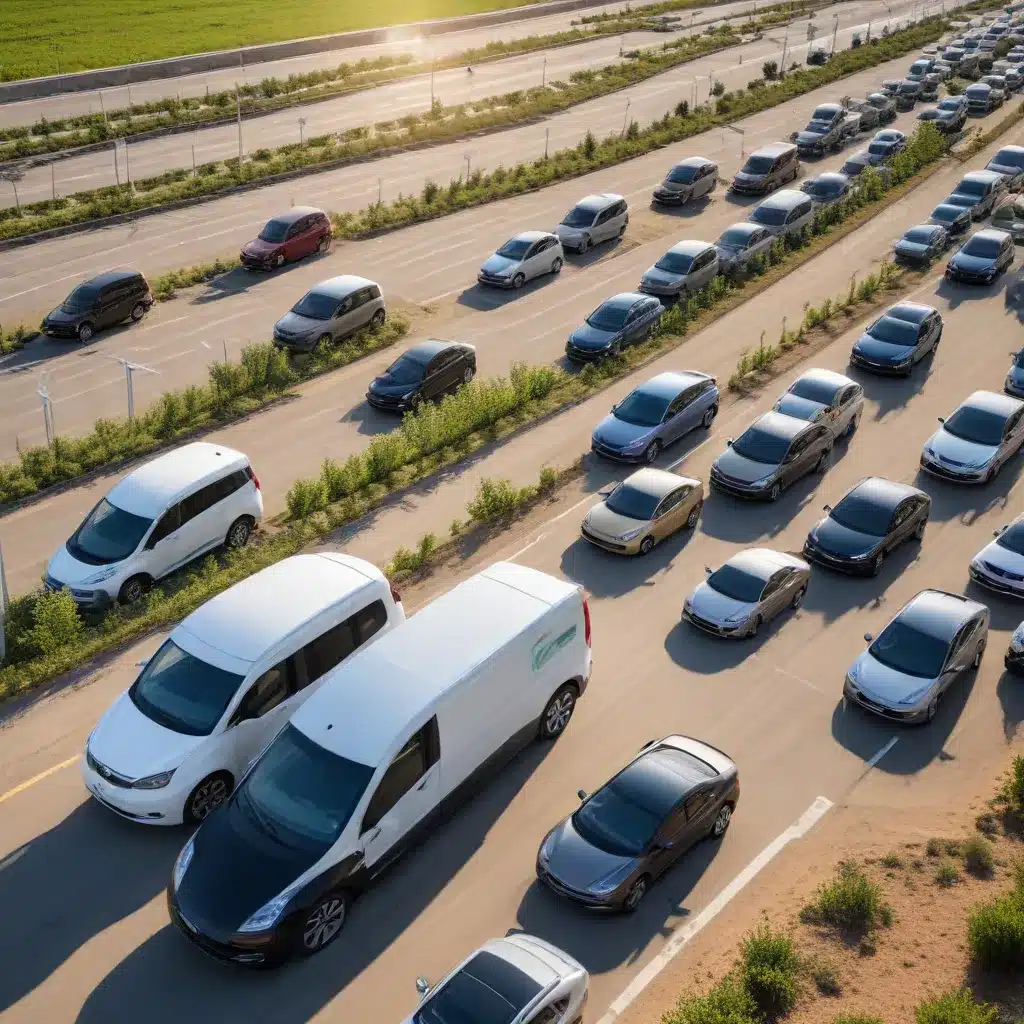
As the European Union pursues ambitious net-zero goals, the role of electric vehicles (EVs) in supporting the transition to clean energy has become increasingly crucial. EVs offer a promising pathway to decarbonize the transportation sector while simultaneously enhancing the integration of renewable energy sources (RES) like wind and solar into the power grid.
The growing adoption of EVs presents both challenges and opportunities for grid operators. On one hand, the surge in EV charging demand can strain distribution networks and necessitate costly infrastructure upgrades. On the other hand, vehicle-to-grid (V2G) technology enables EVs to function as mobile energy storage, alleviating the intermittency of renewable generation and supporting grid stability.
To optimize the interplay between EVs and renewable energy integration, researchers and policymakers are exploring innovative strategies that leverage the synergies between these technologies. This article delves into the latest developments, highlighting how grid-connected EVs can be leveraged to enhance the flexibility, reliability, and sustainability of Europe’s evolving power systems.
Harnessing the Flexibility of Grid-Connected EVs
As the electric vehicle market continues to expand across Europe, grid operators are facing the challenge of managing the increased electrical load from EV charging. Uncontrolled or uncoordinated EV charging can lead to grid congestion, voltage instability, and the need for costly upgrades to distribution infrastructure.
However, the inherent flexibility of EVs presents a unique opportunity to mitigate these challenges. By integrating smart charging strategies and V2G capabilities, grid-connected EVs can become valuable assets in the transition towards a decarbonized energy system.
Smart charging algorithms can optimize the timing and rate of EV charging, aligning it with periods of high renewable energy generation or off-peak electricity demand. This helps to flatten the load profile, reducing the strain on the grid and enabling a higher penetration of renewable sources. Furthermore, V2G technology allows EVs to discharge their stored energy back to the grid when needed, effectively transforming them into mobile energy storage systems.
Enhancing Renewable Energy Integration
The integration of grid-connected EVs with RES, such as wind and solar, can significantly enhance the overall efficiency and sustainability of the power system. By leveraging the storage capacity of EV batteries, grid operators can better manage the intermittency and variability inherent in renewable energy generation.
During periods of high renewable energy production, excess electricity can be used to charge EV batteries, effectively storing this clean energy for later use. Conversely, when renewable generation is low, the stored energy in EV batteries can be discharged back to the grid, smoothing out fluctuations and ensuring a more reliable supply of electricity.
This bidirectional energy flow between EVs and the grid, facilitated by V2G technology, can contribute to the grid balancing process, reducing the need for fossil-fuel-based peaking plants and enabling a higher penetration of renewable energy sources.
Policy and Regulatory Frameworks
To fully harness the potential of grid-connected EVs for renewable energy integration, policymakers and regulators play a crucial role in creating supportive frameworks. Across Europe, countries are implementing various incentives and regulations to encourage EV adoption and promote the integration of these vehicles with the power grid.
For instance, some nations have introduced purchase subsidies, tax credits, or favorable electricity tariffs for EV owners who engage in smart charging or V2G activities. These financial incentives help to make EVs more affordable and incentivize their integration with the power grid.
Moreover, regulatory bodies are developing grid codes and interconnection standards to ensure the seamless integration of EV charging infrastructure with the electricity network. These guidelines address technical requirements, communication protocols, and grid services that EV owners and charging station operators must comply with to maintain grid stability and reliability.
Public-Private Partnerships and Pilot Projects
Realizing the full potential of grid-connected EVs for renewable energy integration requires collaboration between the public and private sectors. Across Europe, numerous pilot projects and demonstration studies are underway, exploring the techno-economic and operational aspects of this integration.
These initiatives bring together utilities, charging infrastructure providers, automakers, and research institutions to develop and test innovative solutions. They investigate topics such as optimized charging algorithms, V2G capabilities, energy storage integration, and the impact on grid operations.
By fostering these public-private partnerships, policymakers and industry stakeholders can rapidly scale up the deployment of grid-connected EVs and ensure their seamless integration with renewable energy sources. The lessons learned from these pilot projects will help inform future regulations, business models, and technology advancements, ultimately accelerating the transition towards a sustainable, low-carbon energy future.
Conclusion
As Europe continues its pursuit of ambitious net-zero targets, the integration of grid-connected electric vehicles with renewable energy sources emerges as a pivotal strategy. By harnessing the flexibility of EVs, grid operators can better manage the intermittency of renewable generation, enhance grid stability, and facilitate a higher penetration of clean energy sources.
Through the implementation of smart charging algorithms, V2G technology, and supportive policy frameworks, the synergies between EVs and renewable energy can be optimized, ultimately contributing to a more sustainable, efficient, and resilient power system. The ongoing collaborations between the public and private sectors in the form of pilot projects and demonstrations further solidify the pathway towards a decarbonized future, where grid-connected electric vehicles play a central role.
As the European Future Energy Forum continues to explore the frontiers of renewable energy integration, the integration of grid-connected EVs stands out as a promising and impactful solution, poised to drive the continent’s transition towards a cleaner, more sustainable energy landscape.







